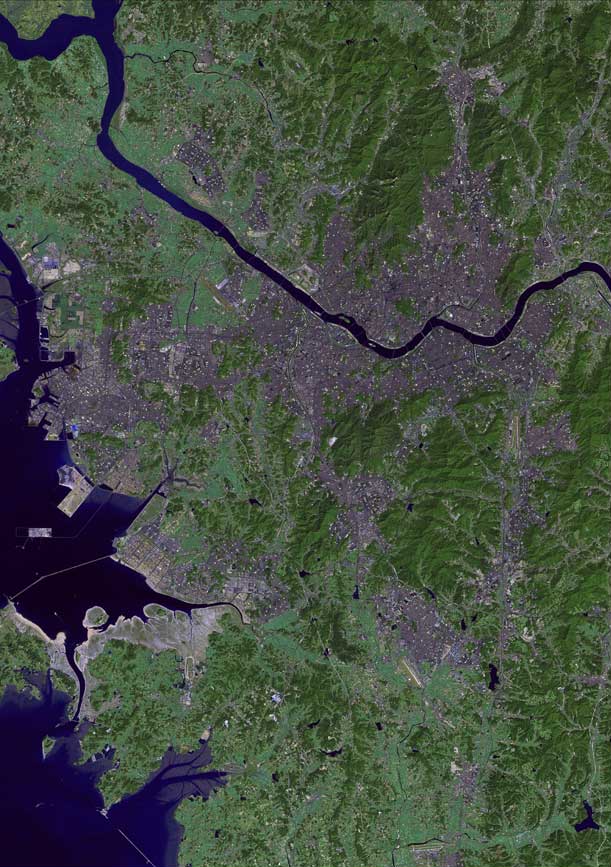Your search - Kang, Hang, 1567-1618 - did not match any resources.
Han River (Korea)
 }}
|mr=Han'gang
|rr=Han(-)gang
}}
}}
|mr=Han'gang
|rr=Han(-)gang
}}The Han River or Hangang (; )}} is a major river in South Korea, with some of its tributaries and drainage basin in North Korea. It is the fourth longest river on the Korean peninsula after the Yalu ("Amnok"), Tumen ("Tuman"), and Nakdong rivers. The river begins as two smaller rivers in the eastern mountains of the Korean peninsula, which then converge near Seoul.
The Han River and its surrounding area have played an important role in Korean history. The Three Kingdoms of Korea strove to take control of this land, where the river was used as a trade route to China (via the Yellow Sea). The river is no longer actively used for navigation because its estuary is located at the borders of the two Koreas, and civilian entry is barred.
The river serves as a water source for over 12 million South Koreans. In July 2000, the United States military admitted to having dumped formaldehyde in the sewer system connected to the river, which caused protests.
The lower stretches of the Han River are lined with pedestrian walkways, bicycle paths, public parks and restaurants, particularly in Seoul. In a 2011 survey conducted by Seoul Development Institute of 800 residents and 103 urban planning and architectural experts, 51% of residents and 69% of experts voted the river the second most scenic location in the city, following Mount Namsan in the top spot. Provided by Wikipedia